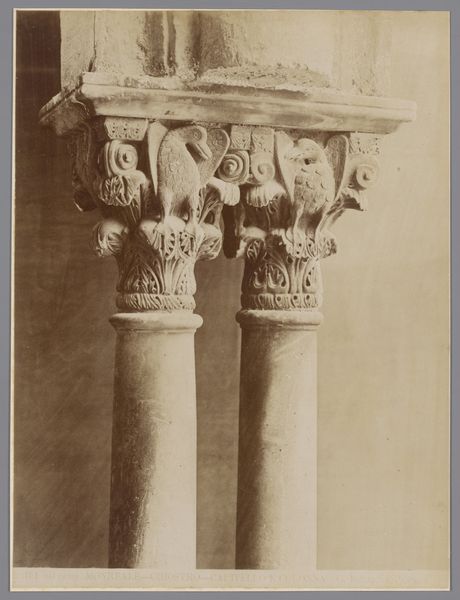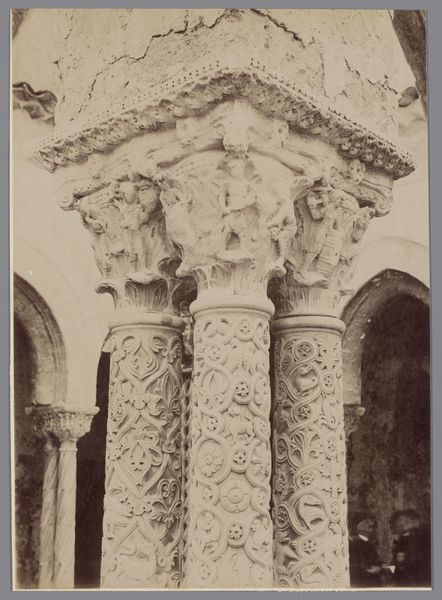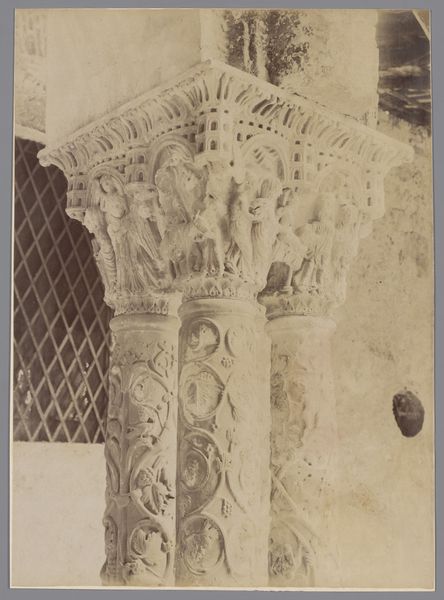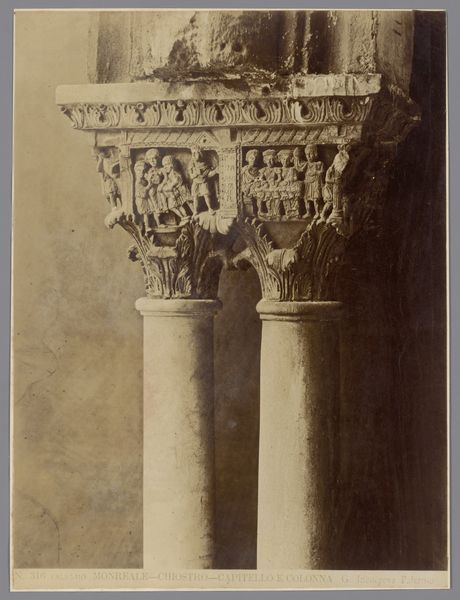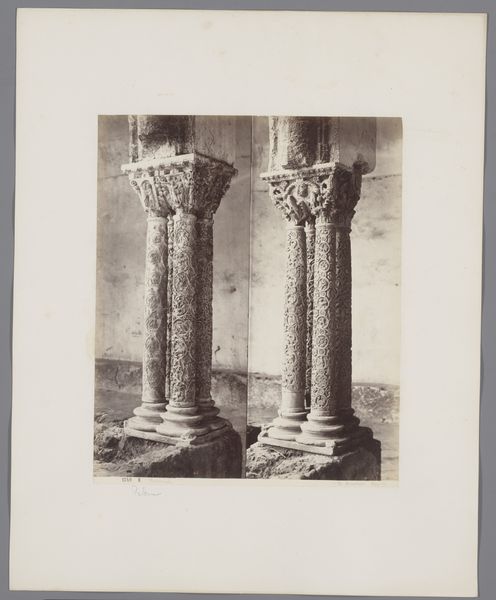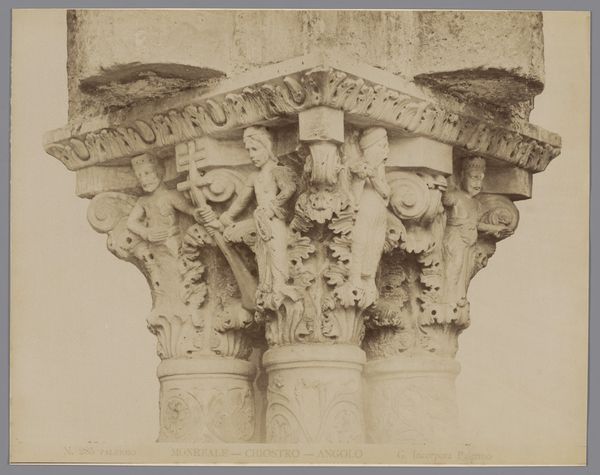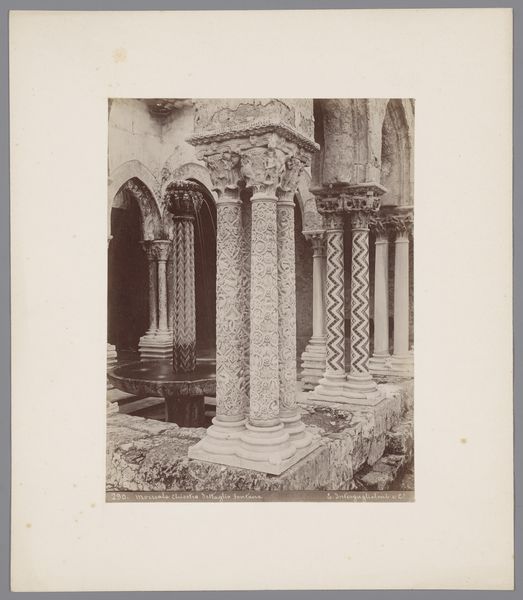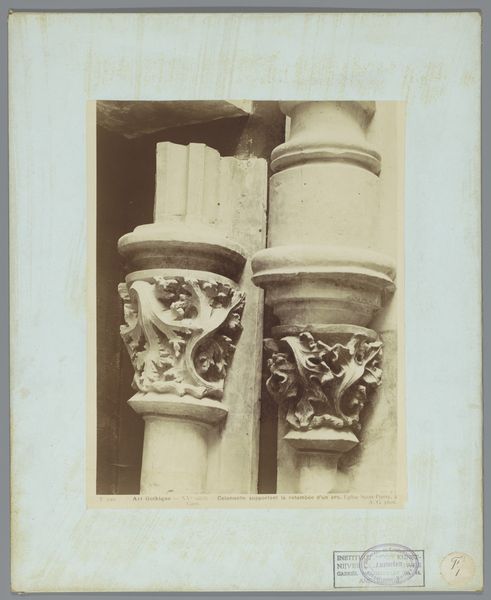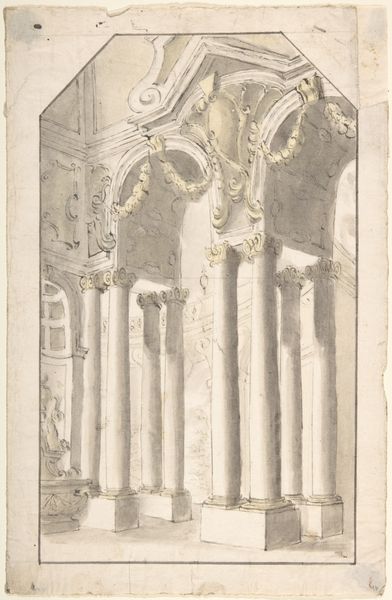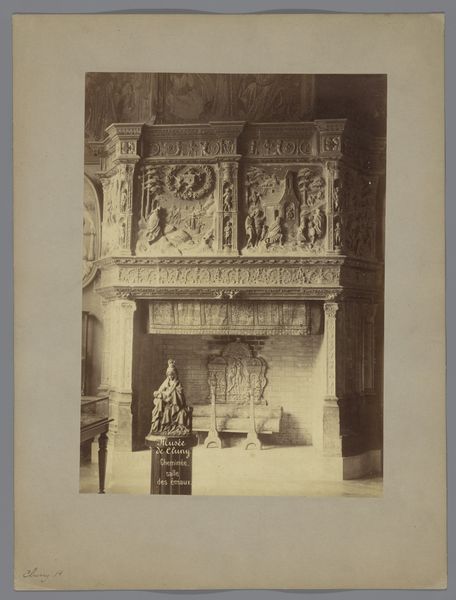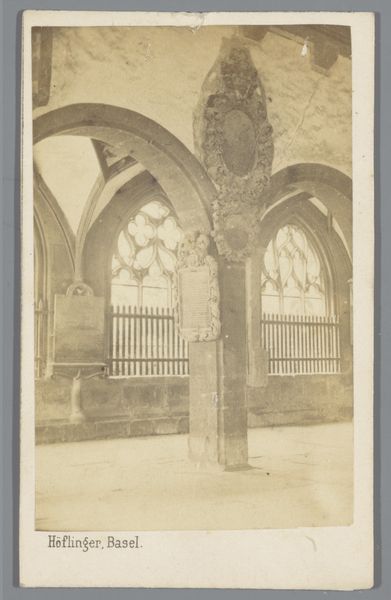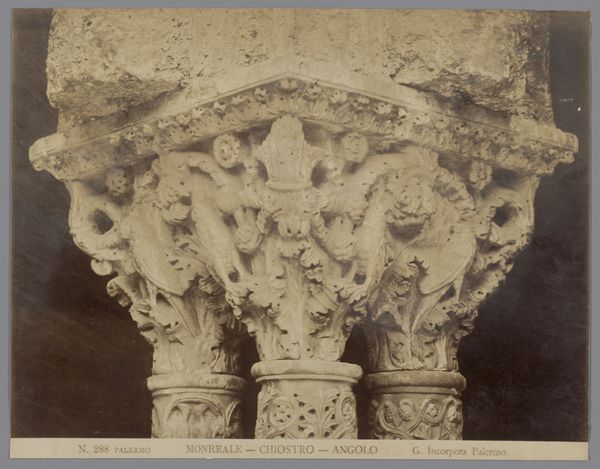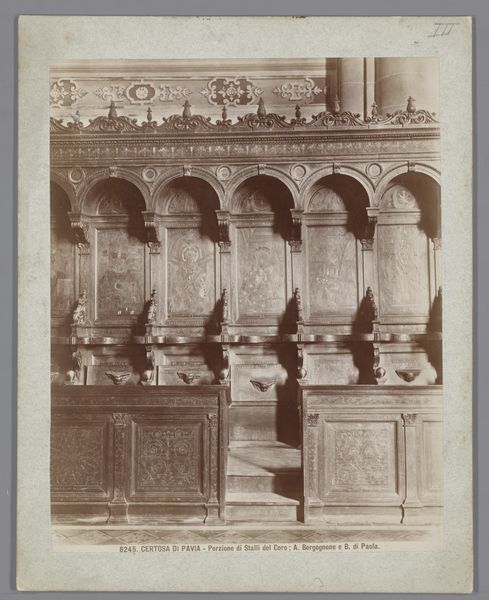
print, photography, architecture
# print
#
sculpture
#
photography
#
romanesque
#
geometric
#
architecture
Dimensions: height 253 mm, width 189 mm
Copyright: Rijks Museum: Open Domain
Curator: Here we have Giuseppe Incorpora's photograph, "Detailopname van de kloostergang van de dom van Monreale," placing us in the cloister of Monreale Cathedral sometime between 1856 and 1914. The scene focuses on intricately carved columns. Editor: Immediately, I notice the contrast. The sepia tones create this hushed, almost dreamlike quality. But then, close-up, you see the incredibly laborious detail in the stone—it's not just texture, but a narrative, worked by hand. Curator: Yes, exactly. These aren't just any columns, but potent symbols in the Romanesque tradition. Consider the spiraling columns—a visual echo of the constant, upward striving of the soul towards divine understanding. Editor: And the stone itself, surely sourced locally? The labor involved must have been immense, considering the tools of the time. I wonder what kind of workshops and systems of production fostered this kind of skill, and how this work relates to the wider economy and even political conditions of that period. Curator: The floral and figural carvings in the capitals—the tops of the columns—aren't mere decoration, either. They're imbued with moral tales and biblical narratives meant to educate the monks using this space for meditation and prayer. One could spend hours deciphering their hidden meanings. Editor: It brings into sharp relief the social function of labor in art. Someone shaped this stone, invested countless hours transforming matter to meet those symbolic aims. Each column whispers about time, not only religiously, but in its physical making. Curator: Ultimately, Incorpora captures this moment in time, and helps to document the monastery and convey some of its powerful symbolic history to future viewers like ourselves. Editor: A confluence of elements—labor, history, religion, all frozen in time by Incorpora's lens. A testament to the transformative power of human hands, as well as how even photographic materials can reveal information about how our built environments are actually "built."
Comments
No comments
Be the first to comment and join the conversation on the ultimate creative platform.
